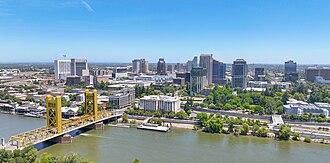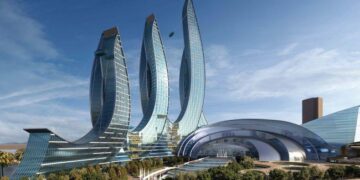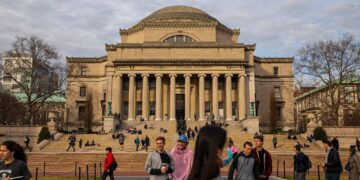Policy Address: Towards a Liveable, Innovative and Green Hong Kong
******************************************************************
The Chief Executive, Mr John Lee, set out his vision of a liveable, innovative and green Hong Kong in his second Policy Address today (October 25), emphasising land and housing as the top priority.
Measures introduced in last year’s Policy Address have increased public housing supply. Public housing demand for the next 10-year period (2024-25 to 2033-34) is 308 000 units, while the Government has identified sufficient land to develop about 410 000 public housing units. The excess housing will help shorten the waiting time for public rental housing (PRH) units.
Total public housing supply, including light public housing, will reach 172 000 units in the coming five-year period (2024/25 to 2028/29). Compared with the five-year period at the beginning of the current-term Government (from 2022-23 to 2026-27), an additional of 67 000 households will be benefitted (Note).
The Government will continue to enhance the quantity, speed, efficiency and quality of public housing. To that end, plans include:
10 Hong Kong Housing Authority (HKHA) redevelopment projects, creating about 32 800 flats. The HKHA will provide the housing estates with additional local open space and recreational facilities;
next year, the HKHA will select 10 PRH estates as pilot sites for the adoption of such innovative technologies as the Internet of Things sensors, artificial intelligence and mobile devices, to help in daily estate management; and
the HKHA will continue to apply modular integrated construction (MiC) approach and other innovative construction technology to expedite construction and enhance building quality.
As for overall land supply, it is estimated that more than 7 000 hectares of land will be provided over the 30-year period ending in 2048. That should leave at least 1 000 hectares of land in reserve, after considering projected land demand over the same period. The supply target for private housing in the next decade is projected to be 132 000 units. The Government will make available sufficient land in the next five years to provide about 80 000 units.
To stay on top of the pressing issue, the Government will continue to expedite land production. Measures include:
streamlining statutory and administrative procedures;
extending the arrangement for standardisation of land premium; and
expediting the approval of building plans.
The issue of Subdivided Units (SDUs) stems from the prolonged shortage of land and public housing, which is very complicated and requires meticulous planning to resolve. The Government has been increasing the overall supply of public and private housing. In particular, the supply of PRH units in the coming decade will exceed the supply target projected, making it an opportune time to resolve this long-standing problem.
A Task Force on Tackling the Issue of Subdivided Units will be established, led by the Deputy Financial Secretary, with the Secretary for Housing as deputy.
The task force will study the issue in detail, presenting recommendations along the following directions in 10 months’ time, including setting minimum living condition standards for SDUs, offering measures to eradicate substandard SDUs, preventing their resurgence and putting forward solutions to address the problem in an orderly manner.
To address problems related to the dilapidation of aged buildings, the building owners are provided with technical and financial support for building repairs. To improve building management and building safety, the Government will:
adopt a more precise approach in selecting target buildings for issuance of the Mandatory Building Inspection Scheme notices;
strengthen capabilities in inspecting buildings and carrying out emergency repair works through outsourcing;
review Operation Building Bright 2.0 to assist and urge owners or owners’ corporations (OCs) that have applied for the subsidy to expedite action;
introduce a bill next year to amend the Buildings Ordinance, streamlining prosecution procedures and raising penalties against non-compliance with notices;
introduce a bill this year to amend the Building Management Ordinance, strengthening the regulation of OCs regarding large-scale maintenance projects; and
strengthen the registration and disciplinary systems of contractors to ensure the quality and safety of their work.
The Northern Metropolis is a new engine for Hong Kong’s future growth. Upon completion, in 20 years, it will provide about 500 000 new housing units and create 500 000 new jobs.
The Government will shortly publish the Action Agenda for the Northern Metropolis. It will integrate deeply with the planning of Shenzhen and other Guangdong-Hong Kong-Macao Greater Bay Area cities. The planning of the Northern Metropolis has adopted an “industry-driven and infrastructure-led” approach, dividing the region into four main areas:
a hub for high-end professional services and logistics located in Hung Shui Kiu and connected with the Qianhai Shenzhen-Hong Kong Modern Service Industry Co-operation Zone;
an innovation and technology zone covering the Hong Kong-Shenzhen Innovation and Technology Park in San Tin Technopole, which will create synergy with the Shenzhen Innovation and Technology Zone;
a boundary commerce and industry zone that will drive such industries as advanced construction, green environment industries, health care, food technology and modern logistics, while promoting cross-boundary business services; and
a blue and green recreation, tourism and conservation circle covering Robin’s Nest, Sha Tau Kok and Yan Chau Tong.
In addition, the area will be home to a wide range of community and social services, including a Northern Metropolis University Town, government office buildings, arts and cultural facilities, and the Sam Po Shue Wetland Conservation Park.
The newly established Committee on the Financing of Major Development Projects will put forward proposals on financing the relevant infrastructure and transportation development.
The Hetao Shenzhen-Hong Kong Science and Technology Innovation Co-operation Zone lies at the convergence of the Northern Metropolis and the Guangzhou-Shenzhen innovation and technology corridor. The Government would work with the Shenzhen Municipal Government to promote its development and explore innovative measures, including:
providing travel convenience for research and development (R&D) personnel;
promoting cross-boundary capital flow within the Hetao Co-operation Zone;
facilitating data and sample exchanges for research or trials;
capitalising on Hong Kong’s ability to pool international talent to work in Hetao; and
taking forward frontier technological research.
The Government would establish the Greater Bay Area International Clinical Trial Institute next year in the Hetao Shenzhen-Hong Kong Science and Technology Innovation Co-operation Zone, providing one-stop clinical trial support for pharmaceutical R&D institutions.
In terms of the transport network, the Hong Kong Major Transport Infrastructure Development Blueprint, to be published by end-2023, would include the enhanced Three Railways and Three Major Roads proposals, and new projects including two railways and one major road. The enhanced proposals include the provision of three intermediate stations at Northeast Tsuen Wan, Northeast Kwai Chung and Tsuen King Circuit on the Central Rail Link and transit to the Tsuen Wan Line. The new two railways and one major road will be conducive to the development of new towns in the eastern part of the Northern Metropolis.
In addition, the Government will implement smart and green mass transit in East Kowloon, Kai Tak and Hung Shui Kiu/Ha Tsuen. The Government will commence the preparatory work, including planning, investigation and design. Suppliers and operators will be invited to submit expressions of interest for projects.
The Government would make every effort to promote the use and supply of new energy in sea, land and air transport so as to spearhead green transformation of the industry. Measures include:
developing a green maritime fuel-bunkering centre to attract more ocean-going vessels to bunker green fuel in Hong Kong. An action plan for the construction of bunkering facilities and the development of supply chains, including the provision of liquefied natural gas bunkering will be launched next year;
promoting the supply of sustainable aviation fuel, with an action plan to be formulated by the Airport Authority Hong Kong;
supporting green public land transport: testing more new energy vehicles, including electric public light buses, electric heavy goods vehicles, electric coaches, hydrogen double-decker buses and hydrogen street-washing vehicles. The Government would earmark $50 million to subsidise the purchase of wheelchair-accessible electric taxis. A citywide green transformation roadmap and timetable for public buses and taxis would be formulated in the first half of 2024, with a view to achieving zero vehicular emissions by 2050. The Government would provide supporting facilities to realise the goal of introducing about 700 electric buses and 3 000 electric taxis by end-2027;
promoting electric private car use: the Government would expedite the expansion of the network of charging facilities, with the goal of increasing the number of public and private parking spaces with charging facilities to 200 000 by mid-2027. The Government will also offer incentives for operators of petrol-filling stations to convert the stations into green-energy refuelling stations. Two vacant petrol-filling station sites, to be converted to charging stations in the first quarter of 2024, will be offered for tender; and
formulate the Strategy of Hydrogen Development in Hong Kong in the first half of next year.
The Government would launch a “Shining City Project” next year, developing the Shing Mun River and Yuen Long Nullah into flower-viewing hotspots. Art and design elements will be brought to suitable pitches, courts and sports venues, and landscaping improvement works will be implemented in selected areas during major festivals.
Note: For the five-year period at the beginning of the current-term Government (from 2022-23 to 2026-27), the overall supply of public housing units was about 105 000 units.
Ends/Wednesday, October 25, 2023
Issued at HKT 22:50
NNNN
>>> Read full article>>>
Copyright for syndicated content belongs to the linked Source : HKSAR – https://www.info.gov.hk/gia/general/202310/25/P2023102500796.htm































